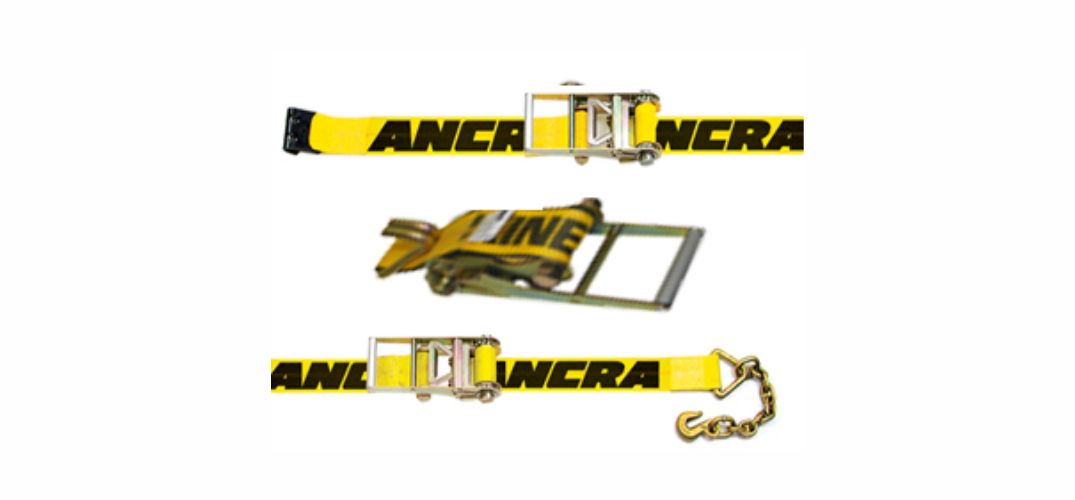Ratchet tie down straps are indispensable tools for securing cargo during transportation. Whether you are moving household items, carrying heavy equipment, or transporting goods for your business, these versatile straps ensure your load remains safe and intact. From their reliability to ease of use, ratchet tie down straps offer a simple yet effective solution to meet your cargo-securing needs. This article will explore everything you need to know about ratchet tie down straps, including their benefits, uses, and tips for proper application.
What Are Ratchet Tie Down Straps?
Ratchet tie down straps, also known as ratchet straps or tie-downs, are strong, adjustable straps designed to securely hold cargo in place. Made from durable materials such as polyester, these straps can withstand significant pressure and resist abrasion, UV damage, and weather conditions. The ratchet mechanism allows users to tighten the straps to the desired tension without slipping, ensuring optimal load security.
Benefits of Using Ratchet Tie Down Straps
1. Safety and Reliability
One of the primary advantages of ratchet tie down straps is their unparalleled safety and reliability. These straps are designed to handle heavy loads, making them ideal for securing valuable or bulky cargo during long hauls. Their strong and durable construction minimizes the risk of straps breaking or loosening during transport.
2. Ease of Use
The ratcheting mechanism makes these straps incredibly simple to use. With minimal effort, you can achieve the perfect tension and hold your cargo firmly in place. Additionally, releasing the straps is just as user-friendly, thanks to the quick-release feature.
3. Versatility
Ratchet straps come in a variety of lengths, widths, and weight ratings, making them suitable for an array of applications. From tying down motorcycles, furniture, or construction materials to securing boats or luggage on a trailer, ratchet tie down straps can handle the job with ease.
4. Cost-Effective Solution
Compared to other cargo-securing tools, ratchet tie down straps are remarkably affordable while offering exceptional performance. Their durability ensures long-term usage, providing excellent value for money.
Different Applications of Ratchet Tie Down Straps
Ratchet tie down straps are suitable for numerous uses across various industries and everyday scenarios. Here are some common applications:
- Transporting Vehicles: Securing motorcycles, cars, or ATVs on trailers.
- Moving Furniture: Safely transporting large items like couches, tables, or cabinets.
- Construction and Hauling Equipment: Tying down heavy tools, machinery, or raw materials.
- Securing Luggage: Keeping suitcases and bags in place when traveling.
- Boating and Marine Use: Securing watercraft such as boats and jet skis.
How to Use Ratchet Tie Down Straps Correctly
1. Inspect the Straps Before Use
Always inspect your ratchet tie down straps for signs of damage, wear, or fraying before each use. Damaged straps may fail under pressure, posing a safety risk.
2. Position the Straps Properly
Ensure the straps are positioned evenly over the cargo. Avoid twisting or over-tightening them, as this can cause unnecessary strain on both the straps and the cargo.
3. Use the Ratchet Mechanism
Feed the loose end of the strap through the mandrel of the ratchet. Tighten the strap by operating the ratchet handle until the desired tension is achieved. Be mindful not to overtighten, as this could potentially damage the cargo.
4. Secure Loose Ends
Once the straps are tightened, secure any excess strap length to prevent it from flapping in the wind during transit.
Maintenance Tips for Ratchet Tie Down Straps
Proper maintenance ensures the longevity and functionality of your ratchet tie down straps. Here are key tips to keep in mind:
- Clean After Use: Remove dirt, debris, and moisture to prevent wear and tear.
- Store Properly: Keep the straps in a cool, dry place away from sunlight and extreme temperatures to avoid material degradation.
- Regular Inspections: Perform routine checks for signs of fraying, abrasions, or damage to the ratchet mechanism.
Things to Consider When Buying Ratchet Tie Down Straps
When choosing ratchet tie down straps, there are a few important factors to consider:
- Weight Capacity: Ensure the straps are rated to handle the weight of your cargo.
- Length and Width: Choose straps with appropriate dimensions based on the size of the load.
- Material Quality: Opt for straps made of high-quality materials like polyester for maximum durability.
- Hooks and Fittings: Look for sturdy and rust-resistant hooks and hardware that will withstand the rigors of transport.
Common Mistakes to Avoid
Avoiding these common pitfalls can help you make the most of your ratchet tie down straps:
- Overloading Straps: Do not exceed the load capacity of the straps, as this can result in failure and potential accidents.
- Improper Attachment: Failing to secure hooks or anchor points properly may lead to load shifting during transit.
- Skipping Inspections: Using damaged or frayed straps significantly increases the risk of failure.
Why Ratchet Tie Down Straps Are a Must-Have Tool
Owning a set of ratchet tie down straps is essential for anyone who regularly hauls cargo. Their unmatched combination of reliability, ease of use, and versatility makes them a trusted choice for professionals and casual users alike. By following proper usage and maintenance practices, you can ensure your straps perform flawlessly for years to come.
Investing in high-quality ratchet tie down straps is a small price to pay for the significant peace of mind they provide in keeping your cargo safe and secure. Whether for personal or professional use, these straps are the ultimate solution for all your cargo-securing needs.





























